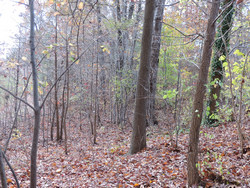Understanding forest litter for better climate models
The DECOMFORECO (Litter decomposition in forest ecosystems: Assessing the functional role of climate, litter quality and soil organisms) project examined the link between biodiversity and decomposition along climatic gradients in forest ecosystems. Unlike previous investigations, the work focused on the effects of functional biodiversity at the three trophic levels of producer, decomposers and detritivores, rather than on taxonomy. The aim was to link aboveground and belowground diversity with decomposition. Scientists compared the effects of plant litter and decomposer diversity between terrestrial and aquatic ecosystems at the continental scale and for individual biomes. A biome is an area of the world that has a particular climate and contains particular plants and animals. Researchers also selected 10 sites at the regional scale in southern France and examined the effect of climate change, biodiversity of litter and soil organisms on litter decomposition. At the local scale, they determined the effects of soil microbes and litter quality on both leaf and root litter decomposition in response to an experimental drought. Results showed that micronutrients within the litter layer and environmental variation among biomes were the main drivers of litter carbon loss in both aquatic and terrestrial ecosystems. These findings will be used to improve coupled terrestrial-aquatic ecosystem carbon models. At the regional scale, researchers found that the level of phenols and decomposer organisms in the leaf litter and decomposer organisms varied during the decomposition process. They also found that although climate and litter quality explained most of the variance in litter carbon, large animals also play an important role. Experiments in the field and in the laboratory revealed that a reduction in microorganisms and rainfall promoted litter (but not leaf) decomposition in the area of the lower, finer roots. This suggests that contrasting mechanisms are responsible for driving the indirect effects of drought on above- and belowground litter decomposition. Understanding these mechanisms and measuring their effect in drought situations is critical for an accurate integration of litter decomposition in the role of carbon in Mediterranean ecosystems experiencing climate change. DECOMFORECO therefore provided experimental evidence for incorporating the factors responsible for litter decomposition over time and across different ecosystems into predictions for climate change effects on the carbon cycle.
Keywords
Forest litter, carbon cycle, litter decomposition, forest ecosystems, soil organisms, biome







